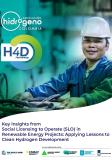Publications
Uzbekistan has the second-most-energy-intensive economy in Europe and Central Asia as measured according to energy intensity per unit of gross domestic product. This study assesses the sex-disaggregated effect of access to energy across the country using data from the 2018 and 2019 waves of the Listening to Citizens of Uzbekistan household survey, which is representative at the national, regional, urban, peri-urban, and rural levels.
The analysis focuses on three main factors: the challenges that female-headed households (FHHs)—which constitute 20 percent of the sample—face in accessing reliable electricity and heating services; whether FHHs struggle more than male-headed households (MHHs) to pay for utilities; and how often FHHs use coping mechanisms such as reducing food, health care, and other purchases to meet basic needs. The analysis suggests that FHHs have similar access to energy as MHHs but find it harder to pay for utilities and basic needs. FHHs are more likely than MHHs to reduce their food consumption and borrow money to pay for basic needs. Poor FHHs with employed household members are more likely to reduce their food consumption than MHHs with no employed household members.
World Bank. 2019. Energy Vulnerability in Female-headed Households: Findings from the Listening to Citizens of Uzbekistan Survey (English). Energy Sector Management Assistance Program (ESMAP). Washington, D.C.: World Bank Group. http://documents.worldbank.org/curated/en/768871580801924356/Energy-Vulnerability-in-Female-headed-Households-Findings-from-the-Listening-to-Citizens-of-Uzbekistan-Survey



